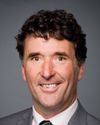First of all, I want to thank you for inviting me to participate in this hearing.
I have with me today Lisa Addario, an employment equity officer, and David Orfald, our director of planning and organizational development.
The PSAC represents over 160,000 workers, the vast majority of whom work for the federal government in its departments and agencies.
Our union firmly believes the Government of Canada must address the changing demographic nature of our society in its employment and staffing policies and practices.
It is not good enough, as the President of the Public Service Commission told us last week, that 88.6% of federal staffing was insecure employment in term, student, and casual positions. It's not good enough, as the President of the Public Service Commission told you last week, that while “applicants to our programs are highly representative of visible minorities, we have yet to achieve appointment levels equal to workplace availability”.
The President of the Public Service Commission sugar-coated the problem when she said:
We found that 17% of new employees appointed to term and indeterminate positions had a history of casual employment. We need to be more strategic.
With respect, I would argue, and argue forcefully, that being more strategic is not the solution. Reducing, if not eliminating, the backdoor opportunities to term and indeterminate employment is the solution, and it's a solution our staffing agencies ignore.
The President of the Public Service Commission omitted to mention the impact of short-term recruitment on equity group members. Staffing for part-time or short-term needs does not attract the same consideration of employment equity objectives as are in place when an employer is staffing an indeterminate position.
According to the Public Service Commission's annual report for 2004-05, approximately 65% of those hired permanently into the federal public service were hired from a pool of temporary workers. Perhaps this is why the Senate committee recently described this hiring practice as a “significant stumbling block” to achieving employment equity.
Added to this is the significant amount of harassment and discrimination reported by racialized members of the public service.
As long as parliamentarians allow the PSC and departments to ignore it, equity-seeking groups will knock at the staffing door of the Government of Canada and they will be denied. It is as simple as that.
I think it is also fair to say that the PSC has an overly optimistic view of its capacity to address the demographic change that is occurring in our society. While it is true to say that the government currently has an abundance of job applicants and that students view the public sector as an employer of choice, it is equally true that the federal government's workforce is aging more quickly than the rest of the economy. More than one-third of its workforce is over 50 years of age, and retirement ages are generally younger than the population as a whole.
That calls for urgent action, and urgent action is not what we are seeing. Staffing actions to replace people who retire from the public sector--and there will be many over the next few years--are not the most significant issue. The most significant issue will be the loss of institutional memory that the government faces.
So saying, as the Public Service Commission does, that we are well equipped to replace staff and put people in the chairs of the retirees gives no indication whatsoever as to how well we are equipped to transfer the knowledge and expertise departing workers take with them. In some areas, it will be a substantial loss, and it has the potential to adversely impact delivery of public services.
So what is to be done? There are those who would lead you in the direction of making it more difficult for people to retire, perhaps by eroding federal pensions. I want to tell you that this would be wrong, as well as wrong-headed.
But I also want to suggest some approaches that would create a positive environment for addressing this challenge. There is no doubt the average age of retirement is a significant issue in the loss of institutional memory. The average age of retirement in the federal public sector in fiscal 2004-05 was 59. That said, fully 27%, or 1,278, of those who retired in 2004-05 did so at the age of 55.
Federal public sector workers contribute to the Public Service Superannuation Plan, a defined-benefit plan that provides pension income that equals 2% of the average best five years of continuous employment, multiplied by the number of years of service. Defined-benefit pension plans are under attack in Canada and elsewhere, but the reality is they should be championed, because they, and they alone, reward workers' long service. They're an essential part of keeping employees on the job. It is a fact that the federal public sector pension plan is a less advantageous defined-benefit plan than the large employer private sector norm because it is integrated with the Canada/Quebec pension plans, whereas most defined-benefit plans that cover workers in large private sector employers are stacked on top of the Canada Pension Plan and the Quebec Pension Plan.
You should also know that the average pensions are anything but generous, particularly for women. In 2005, federal public sector retirees received an average pension of $20,703 after working for the federal government for 22.5 years. Men fared better than women by a country mile, receiving on average a $24,229 pension, compared to the average pension of $14,185 for a retired federal public sector woman worker.
I want to say this: no one should begrudge any public or private worker the opportunity to retire and enjoy some quality time after working an average of nearly a quarter of a century for an employer with a defined-benefit pension plan. In short, there is no basis for making it more difficult for people to retire. A better approach is to create a more flexible workplace, offering enhancements that make it more attractive to keep retiring workers in the workplace longer.
In 1998, as a result of discussions with the PSAC over the workforce adjustment policy, the federal government re-implemented a policy that allows public sector workers employed directly by Treasury Board an opportunity to reduce their working time when they are within two years of retirement. While pay is prorated, when a federal worker takes advantage of this policy and reduces his or her working time by 20% to 40%, benefits remain the same and pensions are unaffected. This is a good policy, and it has clearly assisted the employer by allowing it to retain knowledge, while simultaneously allowing future retirees to make the transition.
Budget 2007 provides workers, including federal government workers, an opportunity to receive pension benefits and simultaneously work and accumulate further pension benefits. This change, which the PSAC supports, was proposed to encourage older workers to stay on the job longer. This benefit will provide flexibility for many older workers, and simultaneously and significantly it will also assist employers, including the federal government, to adjust to the demographic changes occurring in the economy and help to ensure that knowledge, expertise, and institutional memory are seamlessly transferred from one generation of workers to the next. So it is clearly a win-win, and I would encourage members of this committee to ensure that the necessary amendments to the Income Tax Act, the Pension Benefits Standards Act, and the Public Service Superannuation Act are introduced and passed before year-end so that Treasury Board and other federal public sector employees can implement the change when it comes into effect on January 1, 2008.
The key to adapting to a demographic change and ensuring that Canadians are well served by the public service is flexibility. Flexibility allows workers to ease into retirement, and flexibility allows them to remain on the job in a reduced capacity that facilitates the transfer of knowledge and experience to new hires into the system, who represent the diversity of Canada.
There are other things the government can and should do as an employer. It can and should, for example, ensure that federal departments and agencies use students and student employment in accordance with government policy and not as cheap manual labour, as is currently the practice too frequently in too many departments and agencies.
Moreover, the government can and must do more with regard to apprenticeship programs. During our last round of bargaining with Treasury Board, we advanced the demand on apprenticeship. While we did not achieve this contract language, the issue has not gone away.
According to our research, fully 50% of our members who work in the skilled trades can be expected to retire between 2003 and 2013. An adequate apprenticeship program will help the government face the prospect of trying to hire thousands of skilled trades in an environment where our economy faces a critical shortage of skilled workers, and it will provide interesting opportunities for existing employees to pass on skills to the next generation.
To sum up, the government, like all major employers, faces significant challenges on the employment front if it is to provide Canadians with the service they need and deserve. In order to meet these challenges in an effective and serious way, it needs to be innovative and provide more flexibility in terms of retirement.
But it needs to do more than this. It must, as a matter of principle and fairness, ensure that its workforce is representative of the Canadian population. That it has failed thus far to do this is more than unfortunate. That officials mandated to achieve this objective dismissed their failure to do so with the disingenuous assertion that the system needs to be more strategic is a disgrace.
Canadians deserve better, and the government can certainly do better. We encourage the government to act on these recommendations in order to be an employer of choice for the future.
I thank you again for allowing us to make the presentation.










